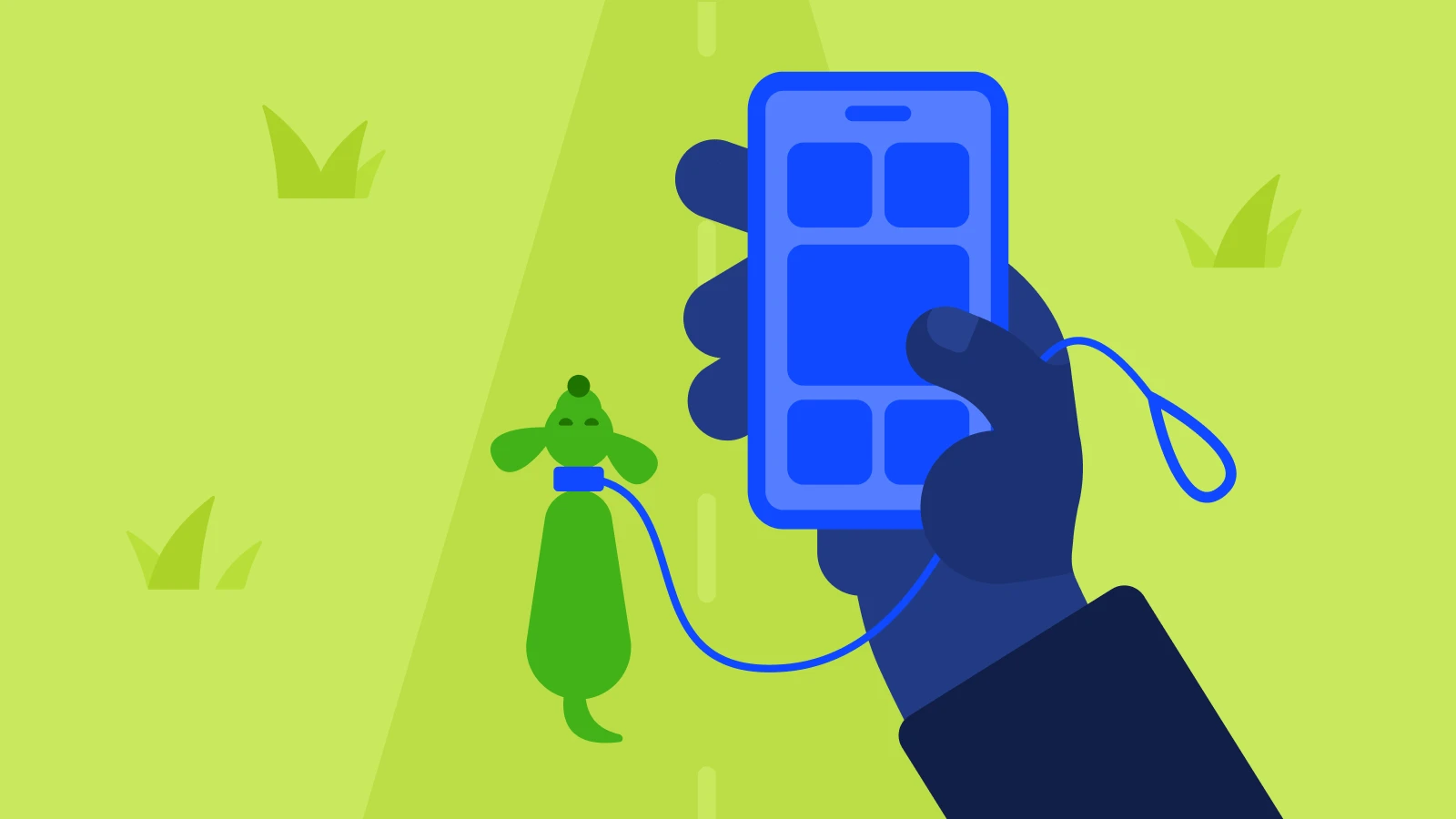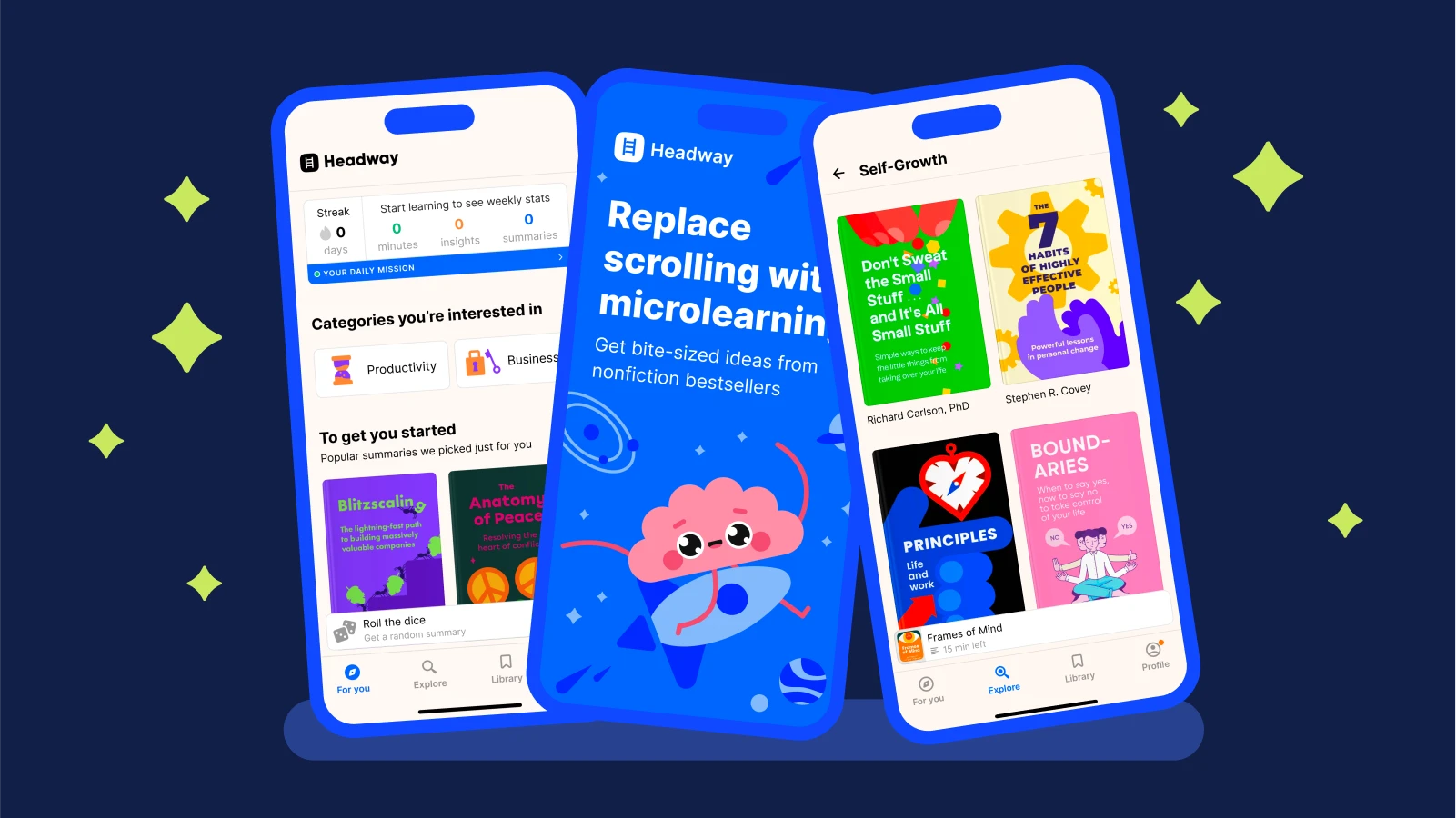The National Institute of Health reports that microlearning isn't just convenient; it's neurocognitively optimized. By spacing out content and avoiding cognitive overload, learners retain more, stay engaged, and complete learning sessions faster than with traditional formats! It's like a new era in learning
| Criterion | Microlearning | Traditional learning |
|---|---|---|
Length of lessons | Short modules (2–15 minutes), focus on one topic | Long lessons (45–90 minutes), covering many topics |
Learning style | Mobile apps, videos, tests, quizzes, podcasts, infographics | Lectures, textbooks, and traditional classrooms |
Memorization efficiency | Higher due to repetition and focus | Can be lower due to information overload |
In this article, we'll explore the difference between these two learning approaches, learn why you should pay attention to microlearning, and dig deeper into its advantages.
What is microlearning?
Microlearning is based on short learning modules, which allow you to break down complex topics into accessible, easy-to-digest lessons. This format is practical for learning something new during commutes or between business meetings. Ideally, you should use it daily or several times a week.
Benefits of microlearning
For self-development and continuous learning:
The main advantage of microlearning is its flexibility. A training session can be a short video on developing communication skills or a set of flashcards for learning a new language. You can learn at your own pace.
In addition, you can complete microlearning modules on your mobile device at any convenient time and place, making this learning format ideal for busy schedules.
Microlearning is also suitable for those who prefer to repeat the material to better absorb it before moving on to the next stage.
Microlearning uses short lessons to enhance knowledge retention, making it easier to remember key concepts over time.
The Headway app is an example of microlearning in practice: bite-sized learning with book summaries, motivation through streaks, and smart repetition make for valuable learning.
Microlearning platforms are great for corporate training:
LMS (learning management systems) lets companies create training specifically for their product. Short training programs teach new employees in a few days or weeks, significantly reducing the adaptation time in a new workplace.
Microlearning content can be easily updated as changes occur and distributed instantly, making it a powerful tool for keeping employees informed. Of course, almost all modern learners have a smartphone and carry it everywhere, making learning on the go easy.
Simulations are interactive microlearning sessions that recreate real-world situations, actions, or processes. They allow students or employees to make decisions, see the consequences, and learn by doing. For example, a simulation could be a treatment algorithm in healthcare or a customer service response algorithm.
According to a study by Software Advice, microformats increase completion rates by 50% or more compared to traditional e-learning programs.
What is traditional learning?
Traditional training is a learning method based on standard approaches to knowledge transfer and traditional teaching methods, such as lectures, textbooks, testing, and homework. The basis of the traditional learning method is passive listening and memorization of information.
This approach is widely used and has long been proven, providing stability in the learning process.
Longer classes (about one hour or more each) allow you to consider complex topics in depth.
Students have live face-to-face communication and feedback, the opportunity to ask the teacher questions, and the possibility of participating in discussions and debates.
A significant advantage is the formation of critical thinking. Text analysis, case studies, and essays contribute to the development of deep thinking.
At the same time, traditional courses have their drawbacks:
Practical classes and laboratories are possible only with traditional learning and require a special learning environment and conditions.
Due to repetition and monotony, traditional methods can become boring for students, leading to a loss of interest and motivation.
Traditional teaching may not consider the individual needs and diversity of students' learning styles.
Microlearning vs traditional learning: Pros and cons
Traditional learning is stable and indispensable for fundamental knowledge, but pretty time-consuming. However, traditional courses will give you a profession and teach you hard skills.
However, microlearning is a modern choice for enhancing your skills, and it's suitable for both children and adults. It appeals to young people accustomed to the Internet and consuming quick, bite-sized information, making it a perfect fit for those exploring the best microlearning apps. This method keeps the attention of the most demanding contemporary student and can be used in your working rhythm when you have a free minute.

Microlearning is typically more cost-effective than traditional methods. Subscription-based pricing models cost only a fraction of an industry conference ticket or instructor-led classroom training.
In addition, the microlearning format allows you to save on expenses associated with employee travel and time off from work.
When to use microlearning vs traditional learning
| Criteria | Microlearning | Traditional learning methods |
|---|---|---|
Learning objectives | Personal development, soft skills development, onboarding, short-term goals | Complex subjects, academic studies, long-term knowledge development |
Ideal learners | Busy professionals, lifelong learners who prefer continuous learning, and children needing engaging formats | Students in structured education, professionals studying complex disciplines |
Content format | Short videos, quizzes, infographics, summaries, mobile-friendly formats | Textbooks, lectures, deep reading, essays, discussions |
Subject matter | Communication, time management, habits, onboarding, basic tech skills | Complex subjects: Management, chemistry, biology, philosophy, literature, physics, history |
Time commitment | Low — fits into short daily routines | High — requires scheduled, consistent study time |
Learning depth | Broad overview, fast consumption, practical tips | In-depth understanding, critical thinking, theory, and analysis |
Technology use | Digital learning: apps, e-learning platforms, interactive tools | May include tech, but not always integrated |
Why microlearning is gaining popularity
Microlearning is becoming increasingly popular today due to its convenience and high efficiency. So, why does this learning method work so well?
Modern studies show that our ability to concentrate on one task for a long time has noticeably decreased. For example, according to a Microsoft study, the average attention span has reduced from 12 seconds in the year 2000 to eight seconds today.
Scientists have long proven that information is easier to absorb when broken down into small parts. This is due to the effect of "spaced learning," stating that when you repeat material at certain intervals, information sticks better in your memory.
Gamification and interactive elements, such as tests, games, and multimedia materials, make learning more interesting and exciting. Quick feedback and a sense of progress motivate you to continue learning.
Thus, microlearning helps us retain knowledge longer because the material is presented in convenient, interactive short bursts that consider the modern features of information perception.
Is microlearning effective? Science says yes
Recent research shows high employee engagement rates in corporate training, higher course completion rates, and better retention. Check out the statistics below:
An Association for Talent Development (ATD) study found that people like microlearning more than traditional courses because it’s easier to remember.
A German study found that students who received short-chunk instruction answered questions 28% faster and performed 20% better
on tests than a traditional group.
About 80–83% of microlearning courses are completed (compared to only 20–30% for traditional e-learning).
Almost 70% of large companies (Fortune 500) actively use microlearning in their L&D (learning and development) programs.
Why is information easier to remember in microlearning?
Due to its structure, microlearning facilitates memorization. Mobile apps use intelligent repetition algorithms that show flashcards when the brain has almost forgotten the information.
"When you do retrieval at the time when you're just about to forget the material you're learning, you strengthen that memory and make yourself retain it much longer than before." – 'Ultralearning,' Scott Young
Many flashcards include images, colors, and examples, which help to engage visual memory. Flashcards combine active playback, spaced repetition, and gamification, so they are one of the best ways to memorize in a short format.
The Headway app uses the spaced repetition method and flashcards for insights to remember.
Start your microlearning journey with Headway today
The Headway app is a microlearning platform that provides short summaries of books focused on self-development, psychology, and leadership. Users can read a summary in about 15 minutes or listen to it in audio format. Additionally, the app employs interval memorization techniques to help you retain the information you read or listen to.

In the Headway app, you can create cards while reading or listening to book summaries. Select an insight or keyword from a 15-minute summary — it's automatically converted into a flashcard in the spaced repetition section.
These cards frequently appear in the spaced repetition module, where Headway uses an algorithm that shows cards repeatedly at optimal intervals — complex insights more often, simple ones less often. It enhances long-term retention.
If you are learning English, you can save cards with new words and create flashcards with their definitions.
Read the story of Nicky, who used Headway for six months. She wanted to use her time to study instead of wasting time on social media, but according to her, it didn't even feel like learning, but more like fun. At the same time, the summaries she listened to influenced her life and changed her habits, and she wanted to put what she had heard into practice — for example, tips on improving sleep from Dr. Winter's book, 'The Sleep Solution.'
Consider setting your own goals, such as improving your nutrition or managing your time better. The app will provide ideas, so you won't have to search for what to listen to.
Additionally, the app includes engaging features like personal challenges. These motivate you to study daily and develop the desire to complete your goals. The best ideas from top books are at your fingertips on the go with Headway!
FAQs
Can microlearning be combined with traditional learning?
Traditional and online education can and should be combined. This harmonious interaction is called blended learning.
Combine traditional tools and the latest technologies! Instead of text, you can create infographics, use memes, and GIFs to study specific rules, create vibrant presentations and visual materials, and conduct virtual tours.
Is microlearning more cost-effective?
Creating short, focused learning modules is usually less expensive than developing large, comprehensive courses. Microlearning is easy to scale for large groups of learners, making it cost-effective for companies with many employees. Microlearning allows you to focus on the specific skills or knowledge learners need, making the process more targeted and effective. A smartphone is enough for training; renting a training facility is unnecessary.
Is microlearning effective for complex topics?
You can use microlearning to study complex topics, but with certain conditions and proper structure. One micromodule = one concept, term, formula, or example. Each micromodule is repeated at intervals, so complex material is absorbed more deeply. Complex subjects are better studied when microlearning is combined with a project or practical work.
What types of content are best suited for microlearning?
Learning material should be clearly defined and divided into small portions. It can be presented as slides or short videos, such as clips.
To enhance understanding, the content should be delivered through clear visuals, such as diagrams, tables, illustrations, or graphs. Immediately afterward, learners should reinforce the material with a practical test or quiz before moving on to the next segment.
Which companies are already using microlearning?
Walmart uses short (3-5 min) modules for customer service, safety, and product training.
Unilever introduced 5-minute international modules on leadership, digital skills, and compliance.
Cisco has over 500,000 users, and short technical video tutorials.
Google uses "Whisper Courses," which are short training tips for managers, integrated into work services.
KFC practices food safety in a 10-minute format.
Bosch launched video tutorials up to 10-minutes long for machine operators.












